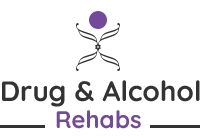Treatment Approaches for Co-Occurring Disorders
WRITTEN BY SONIA BLUMBERG, BA – JULY 8TH, 2020
Dual Diagnosis Treatment is Personalized and Unique to Each Individual
Co-occurring disorders are prevalent among persons who struggle with substance abuse disorder, also known as addiction. Understanding what a Co-occurring disorder is critical before deciding if a Co-occurring treatment program is right for you or a loved one.
The centers we list in our database follow guidelines and standards set by the National Institute of Health and the Substance Abuse and Mental Health Services Administration. All Co-occurring disorder treatment programs must be overseen by more than one psychiatrist and be staffed by licensed mental health specialists.

Search For A Rehab Center Near You
What is a Co-Occurring disorder?
A person with dual diagnosis has both a mental disorder and an alcohol or drug problem. These conditions occur together frequently. About half of people who have a mental disorder will also have a substance use disorder at some point in their lives and vice versa. The interactions of the two conditions can worsen both. (NIH)
Prevalence of Co-Occurring Disorders
Co-occurring disorders are quite common. Most people who struggle with an addiction may already be aware of their symptoms of an emotional or mental health diagnosis. Many alcoholics drink because of their anxiety and may have suspected that they suffer from generalized anxiety. In the same way, some people who are diagnosed with attention-deficit-hyperactivity disorder may use stimulants such as cocaine or methamphetamine because it helps them focus. According to the National Institute on Drug Abuse, in 2018, nearly 40% of the 20 million people in the United States who suffered from an addiction or alcoholism also had a mental health diagnosis. Similarly, a large percentage of adults with a mental health diagnosis also had a Substance Use Disorder.
7.7 million adults have Co-occurring mental and substance use disorders. This does not mean that one caused the other, and it can be difficult to determine which came first. Of the 20.3 million adults with substance use disorders, 37.9% also had mental illnesses. Among the 42.1 million adults with mental illness, 18.2% also had substance use disorders. (NIDA)
Most experts in the field of psychology and addiction recovery will confirm that it is more likely to diagnose a person with a SUD and a mental health disorder than someone who only has SUD. The Substance Abuse and Mental Health Services Administration (SAMHSA), provides Treatment Improvement Protocols (TIP) for the screening, assessment, diagnosis, and management of Co-occurring disorders yearly. Their 2020 TIP on CODs expands further on the prevalence of Co-occurring disorders.
A diagnosis of CODs occurs when at least one disorder of each type can be established independently of the other and is not simply a cluster of symptoms resulting from the one disorder. People with SUDs are more likely than those without SUDs to have Co-occurring mental disorders. Addiction counselors encounter clients with CODs as a rule, not an exception. (SAMHSA)

Identifying Co-Occurring Disorders
Identifying what a person may be experiencing requires a psychiatric evaluation by a psychiatrist who also specializes in addiction. Some common disorders that are typically identified as co-occurring can include:
- Depressive disorders
- Bipolar disorder and Bipolar I and II disorder
- Post-traumatic stress disorder (PTSD)
- Anxiety disorders
- Schizophrenia and other psychotic disorders
- Attention-deficit-hyperactivity disorder (ADHD)
- Obsessive-compulsive disorder (OCD)
- Eating disorders
Best Treatment Approaches for Co-Occurring Disorders
For individuals who are diagnosed with a Co-occurring disorder, they must be admitted into a treatment program that offers specific therapy and treatment for their Co-occurring disorder. Co-occurring disorder treatment programs are also referred to as dual-diagnosis treatment centers or programs. The goal of these programs is first to determine how severe the individual’s mental health diagnosis and SUD are and then proceed with an integrated treatment approach. SAMHSA’s 2020 TIP for Co-occurring Disorders recommends treatment methods to rely on the 4-quadrant model as a diagnostic tool to help determine what level of care and types of treatment are needed.
Per SAMHSA:
- Quadrant 1 – Less severe substance use disorder and less severe mental health disorder
- Quadrant 2 – More acute mental health disorder and less severe substance use disorder
- Quadrant 3 – More severe substance use disorder and less severe mental health disorder
- Quadrant 4 – Severe mental health disorder and severe substance use disorder
The focus of an integrated treatment program for a Co-occurring disorder is to stabilize symptoms of the Co-occurring mental health disorder while providing advanced addiction and or alcoholism treatment methods and therapy. According to researchers at the National Center for Biotechnology Information advances science and health, integration of treatment methods for mental health and SUD is essential. It will include medications to manage emotional and mental health symptoms and rely on multiple treatment methods to provide the patient with a comprehensive and individualized treatment program.
Integrated treatment refers to the focus of treatment on two or more conditions and the use of multiple treatments such as the combination of psychotherapy and pharmacotherapy. Integrated treatment for comorbidity (COD, dual-diagnosis) has been found to be consistently superior compared to treatment of individual disorders with separate treatment plans. (NCBI)
The most widely used and accepted form of therapy for Co-occurring disorders is behavioral therapy. Cognitive-behavioral therapy (CBT) and Dialectical-behavioral therapy (DBT) are the most renowned. The National Institute on Drug Abuse lists several forms of behavioral therapy helpful to Co-occurring disorders. Still, CBT and DBT are at the top of their list and are the gold standards.
